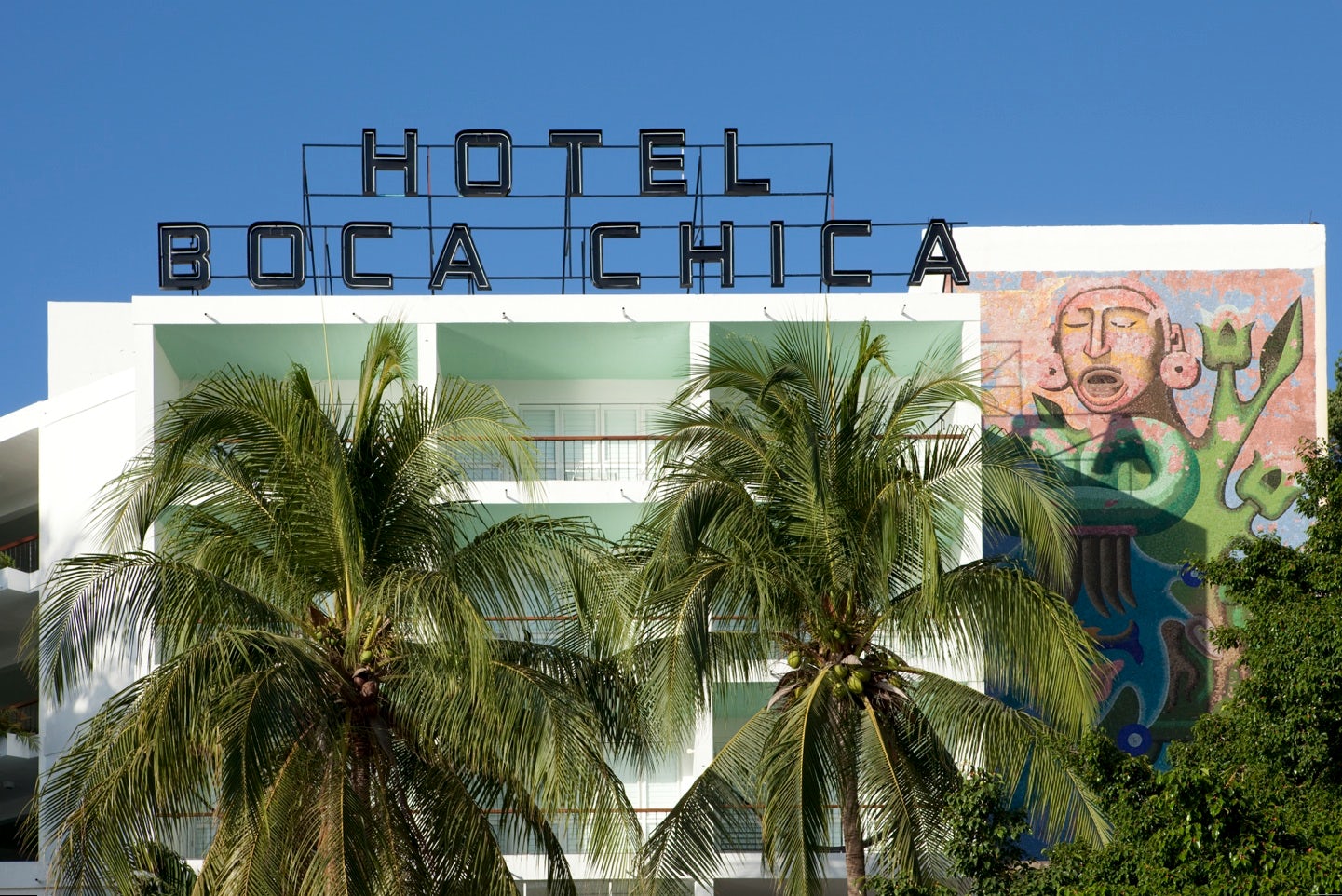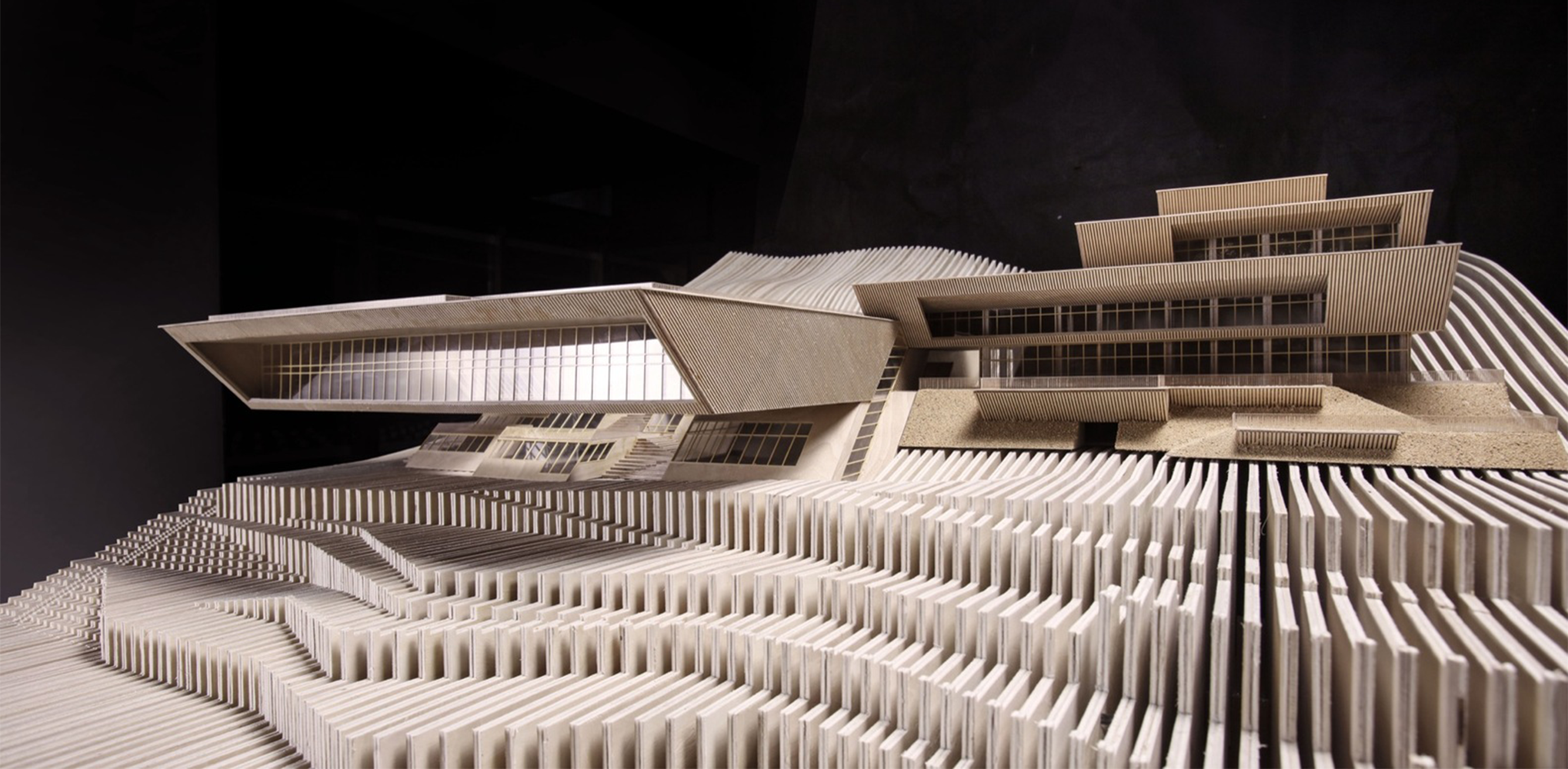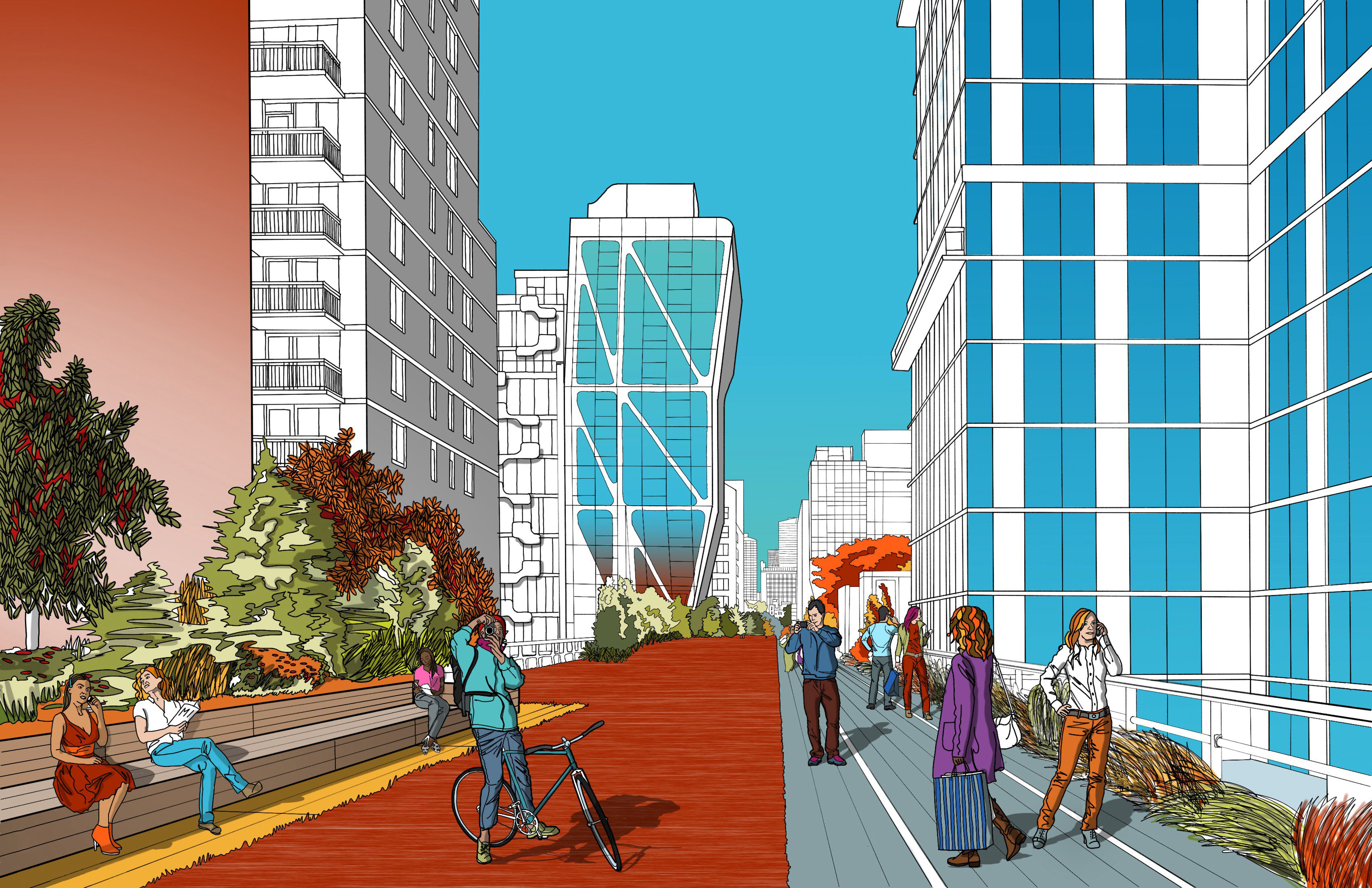Architects: Showcase your next project through Architizer and sign up for our inspirational newsletter.
The air is hot and thick; the pollution so bad it clouds the lungs and the eyes. Day and night, roads are traffic-jammed, streets are messy, and the sidewalks are so crooked you more stumble than walk to your destination. Outside the center, some still live without power, laws or sanitation.
This is Mexico City: the 20-million-people metropolis, one of the world’s largest and most complicated urban areas — and one of the most exciting places for contemporary architecture today.


Mexico: A hot spot of contemporary architecture. Top: Artist Gabriel Orozco’s House, designed by him with architect Tatiana Bilbao. Photo via; bottom: A house by young Mexican firm PRODUCTORA, photo: Iwan Baan via.
A 21st century phenomenon, Mexico City (or DF, as it is locally referred to) is constantly changing, supplying a sea of opportunities for edgy, adventurous architects. The young architecture scene is different here, too. It relies on paths set by modern era’s founding fathers (read our recent post on Mexican modernists here), while commenting on current socio-political issues in original, sensitive, and innovative ways. With an overload of creativity and a growing economy, new firms and studios are opening rapidly, and even attracting workers from other Spanish-speaking countries.
So what defines Mexico’s expanding architectural generation? Read through for an introduction to the work of Frida Escobedo, PRODUCTORA, Periférica, Dear Architects, Alberto Kalach, and others, followed by an exclusive look into Harvard GSD’s recent studio on Mexico City’s future monorail system.
1. Dear Architects
Founded by partners Margarita Flores and Rubén Sepúlveda (both graduates of masters programs in the AA, London), Dear Architects specializes in residential projects. The Mexico City-based firm’s up-to-date minimalism evokes such Japanese designers as Sou Fujimoto and SANAA, but is less formally rigid.
Among the group’s latest projects, now in construction, is “Enterpinos”—a group of houses on a hillside in Valle de Bravo. Previously, Dear Architects designed houses in Monterrey, Santa Catarina, and more.


No colors, only light and form. Dear Architects’ “Casa 4 Planos” in Santa Catarina, Mexico. Photo by Karen Mendoza / Dear Architects via

Section of Dear Architects’ project “CECOM” (2011). Image via Dear Architects
2. Frida Escobedo
A rising star in her homeland and abroad, Frida Escobedo is one of the most interesting and successful architects practicing in DF today. Escobedo, born in 1979, graduated from Harvard University’s Graduate School of Design and represented Mexico in the architecture biennale of Venice in 2012.
Escobedo’s works vary in scale, program and approach, ranging from a tiny home in Acapulco to a restoration and redesign of a modernist hotel and a museum. They are outstanding in their attention to details, their use of textures and many colors, and their strong sense of modern history—visible in her successful work on the Hotel Boca Chica and the La Tallera Siqueiros museum.



Escobedo’s revamped hotel “Boca Chica,” one of Acapulco’s rare modernist gems. Photos via and via

“Casa Negra” in Acapulco, by Escobedo (in collaboration with Alejandro Alarcón). Photo via Frida Escobedo

Entrance to “La Tallera Siqueiros,” a museum by Escobedo in Cuernavaca, Morelos, Mexico. Photo via
3. TAX / Alberto Kalach
Though hardly a young or emerging firm, it’s impossible to ignore TAX (“Taller de Arquitectura X”) when considering contemporary architecture in Mexico. TAX is a Mexico City-based office founded by Alberto Kalach and Daniel Álvarez in 1981 (Alvarez left the firm in 2002). Its most influential project to date is still the Jose Vasconcelos Library in Mexico City— one of the largest, most expensive public projects in Latin America’s recent history.
The library was criticized for its enormous cost—money, its detractors said, that could have been used more efficiently for solving real city problems. It also had to close down for some renovations, right after it opened. Controversies aside, the library is an extraordinary piece of architecture—poetic and astonishing.
Its section in particular, using hung bookshelves, is a work of art. Other projects include private homes in California, schools, and a Natural History Museum. In all, it is clear to see a strong sense of style combining Mexican culture and global contemporary design.

A view of “Casa California”, a private home by TAX. Photo via


Exterior and interior of the Jose Vasconcelos Library. Photos by Yoshihiro Koitani, courtesy of TAX (see the full featured project here)
4. Taller De Arquitectura Mauricio Rocha
Mauricio Rocha’s office, Taller De Arquitectura, is, like TAX, pretty well established, but it is still a key figure in the contemporary architectural scene of Mexico. The office was founded in 1990, when Rocha was still collaborating with the office of his father, architect Manuel Rocha Díaz. Rocha made his name with projects like the Center for the Blind and Visually Impaired and the House for Abandoned Children — both in the Ixtapalapa district in Mexico City.
In these, he placed ultra-designed environments in an area that was considered poor and problematic, though developing. Rocha tends to use raw materials such as hardwood and stone, and incorporates a visual language that draws from modernism as well as from vernacular Mexican styles and methods.


Rocha’s Center for the Blind and Visually Impaired in Mexico City. All photos courtesy of Taller de Arquitectura via Archdaily.com

The School of Visual Arts of Oaxaca by Taller de Arquitectura. Photo courtesy of Taller de Arquitectura via Archdaily.com

Campamento de Edificios Públicos, Taller de Arquitectura’s project from 2004. Photo courtesy of Taller de Arquitectura via Archdaily.com
5. Productora
A cool, innovative and very stylish young office based in Mexico City, Productora was established in 2006 by four young guys: Abel Perles (1972, Argentina), Carlos Bedoya (1973, Mexico), Victor Jaime (1978, Mexico), and Wonne Ickx (1974, Belgium). As its name suggests, Productora emphasizes physical research and production or manufacturing.
This can be seen in the studio’s attention to details and small human scale, with examples like small exhibition designs and installations, or the A-47 mobile art library. If you happen to visit Mexico City in the near future, do yourself a favor and have a drink at the hyped Celeste Champagne & Tea Room, designed by these guys in 2010.

The Celeste Champagne & Tea Room by Productora. A popular spot in the Mexican Capital. Photo via

A47 – A mobile art library designed by Productora. Photo via

A re-use of an old fiberglass roof in one of Productora’s projects. Photo courtesy of Productora via Archdaily.com

A private residence by Productora in Chihuahua, Mexico. Photo by Iwan Baan, courtesy of Productora via Archdaily.com
6. Tatiana Bilbao
At the age of 40, Tatiana Bilbao is the head of one of the more successful offices in Mexico City today. Her works combine an incredibly high level of design with interesting programmatic situations, in content and in scale. An example of her work is the unusual design for Gabriel Orozco’s home and swimming pool (designed in collaboration with the artist).
Along with other residential, commercial, and public buildings, Bilbao is a highly esteemed designer with an extraordinary sculptural ability. She participated in the widely covered project “Ordos 100” in Ordos, China, an insta-city of villas with a master plan by Ai Wei Wei and H&dM. There she designed house number 43, a dog-trot house sliced into sections (see diagram below).

Bilbao’s diagram for her Ordos 100 project, House #43. Image via

A view of Gabriel Orozco’s house, designed by the artist with architect Tatiana Bilbao. Photo via

A research building designed by Bilbao at the Tec de Monterrey campus in Culiacán, Mexico. Photo via
7. Periférica
Founded by Rozana Montiel, Periferica is a young and ambitious firm that’s active in different disciplines, from conceptual projects like imaginary public playgrounds to neighborhood master plans and houses. Noticeable is its approach to detailed public spaces, social engagement, and sustainable design. The studio’s website is a project on its own and worth checking out.

A rendering of Gosta Museum Extension, part of a competition entry by Periferica. Image via

One of four “roadside modules” by Periferica. Photo via
8. AMET / Ambrosi + Etchgaray
AMET is the joint-force firm led by architects Jorge Ambrosi and Gabriela Etchgaray. The young office, based in the Colonia Condesa neighborhood of Mexico City, has built several residential projects—single-family homes and apartment buildings—as well as spa-houses. A common ground for all projects is the emphasis on tectonics and simple materials, referencing American case-study architecture of the mid-century.

A direct visual reference to case-study houses of mid-century California: AMET’s “Spa San Ángel” in Mexico City. Photo by Luis Gordoa via amet.mx

Facade compositions in one of AMET’s apartment buildings in Mexico City. Photo by Luis Gordoa via amet.mx


A play on volumes, voids, materials and plants inside “Casa Buhos”, an apartment building by AMET. All photos by Luis Gordoa via
9. MMX
A collaborative studio established in 2009, MMX is led by Jorge Arvizu, Ignacio del Rio, Emmanuel Ramirez, and Diego Ricalde. The firm works in varied scales—from small interventions and pavilions to landscape design—and is active in Mexico and internationally. MMX’s aesthetic puts emphasis on construction details and design, using precasts and triangular geometry.

Concrete manipulations in MMX’s “CSC house 1”. Photo via

Model detail of MMX’s design for a tower in Taiwan. Image via
10. Derek Dellekamp
Dellekamp’s office in Mexico City, founded in Colonia Condesa in 1999, puts a lot of effort into research and collaborations with different disciplines, such as landscape engineering and industrial and graphic design. The practice is responsible for about one dozen built projects, among them houses and pavilions, as well as a design for House #16 in the project Ordos 100.


Dellekamp’s villa design for the Ordos 100 project. Renderings via

A detail of Dellekamp’s elegant apartment building in the luxurious Polanco neighborhood in Mexico City. Photo via
Thanks to the Francisco Quiñones, Victor Rico Espínola, Adriana Chavez and the Latin GSD group for their advice. This article was originally published in 2013 and some of the facts within the content may differ accordingly.









